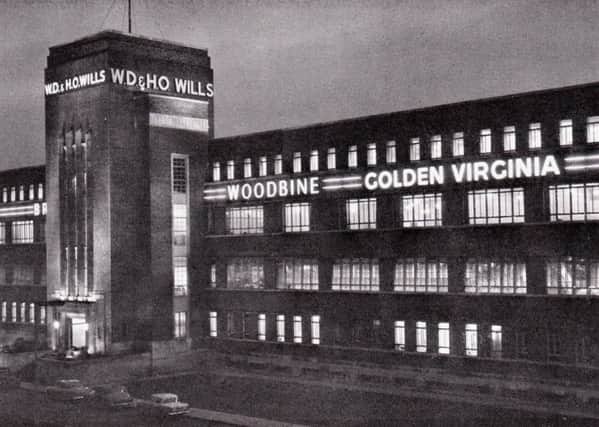Scotland's lost cigarette factories
They produced tens of millions of cigarettes every week, with thousands employed to sort, dry and cut the vast casks of West Virginia tobacco that arrived at Scotland's docks during the 19th and 20th Century.From the factories of Dennistoun, Stirling, Paisley, Edinburgh and Dundee came brands such as Glasgow Mix, Three Nuns, Lorraine and the fabulously named Tassie du Lux. Latterly, as smaller companies were sucked up by global players, familiar brands such as Embassy and Lambert and Butler were pushed out an enormous rate in Scotland's industrial heartlands.READ MORE: When Edinburgh was a brewing powerhouseWhile keeping markets and home and abroad in smoking materials, which in the early days included large quantities of hand prepared snuff and shag for pipes, the tobacco industry was to leave an enduring mark on Scotland - and not just on the health of its customers.Linlithgow man Stephen Mitchell, one of the earliest and most significant player in Scottish tobacco production, bequeathed £70,000 for a large public library in Glasgow following his death in 1874. The Mitchell Library in Charing Cross - one of largest in Europe - was built in his name.READ MORE: In pictures: Scotland's lost car industry 'He really did leave an astonishing legacy,' said Michael Meighan, author of Scotland's Lost Industries, adding that Mitchell also invested in British and North American railways, as well as churches at home.Vast amounts of wealth had been generated by the Glasgow Tobacco Lords during the 18th Century but this rich band of merchants, many who had stakes in the slave-driven plantations of Virginia and Carolina, largely switched focus from the crop following outbreak of the American War of independence.Tobacco was later to be sent directly to Scotland by American merchants. As the bonded warehouses on the banks of the Clyde quietly filled up with huge tubs of the crop, work began on converting into a range of smoking products, snuff, cigars and shag for pipe smoking.Mr Meighan said: 'Tobacco manufacture

